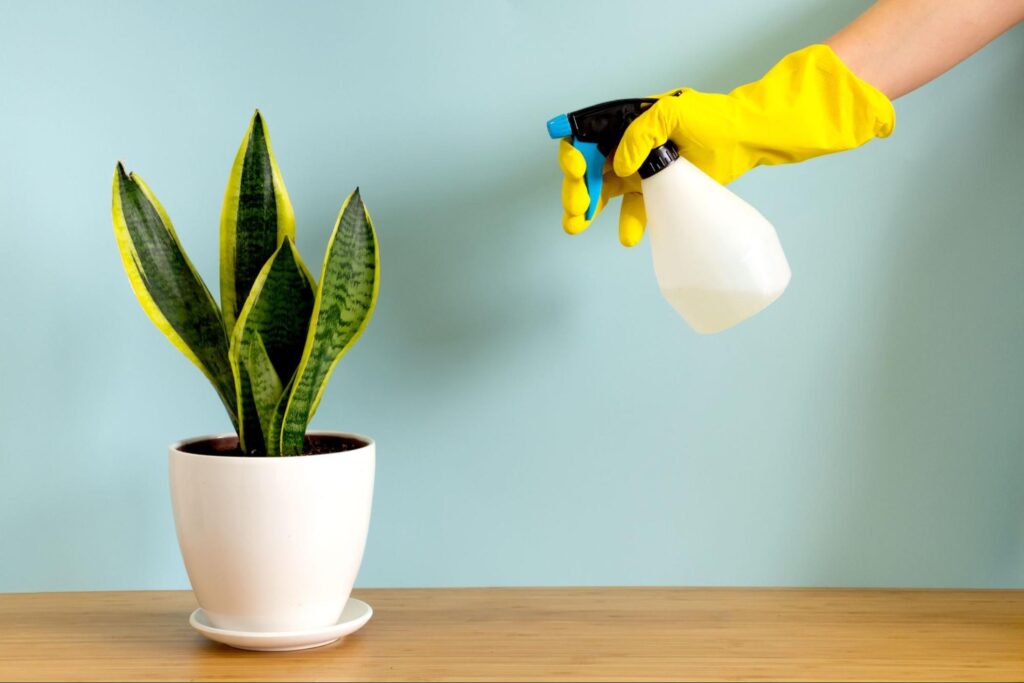The smart Trick of Snake Plant Leaves Turning Yellow That Nobody is Talking About
Some Of Snake Plant Leaves Turning Yellow
Table of ContentsThe Ultimate Guide To Snake Plant Leaves Turning YellowNot known Incorrect Statements About Snake Plant Leaves Turning Yellow Snake Plant Leaves Turning Yellow - The FactsSome Ideas on Snake Plant Leaves Turning Yellow You Should KnowThe Ultimate Guide To Snake Plant Leaves Turning Yellow
Here are seven reasons your snake plant's fallen leaves could be turning yellow and just how to repair it. Numerous various plant troubles can create yellow fallen leaves, or chlorosis. Chlorosis takes place when plants don't have the trace elements they need to produce chlorophyll, which makes foliage green and enables plants to transform sunlight right into food.Serpent plants are drought tolerant many thanks to their delicious leaves. These plants grow ideal in loosened, well-drained dirt that's allowed to dry completely between waterings and may only need water once monthly throughout winter. Overwatering can avoid roots from taking in moisture and nutrients that the plant needs and can even cause root rot.
A potbound plant can not soak up nutrients from the dirt. If your serpent plant is overcrowded or outgrowing its pot, this may be the reason of yellow fallen leaves.
Ensure the plant has intense, indirect light and consistently warm temperature levels, and water just once the soil has totally dried. Keep an eye out for troubles and capture them at an early stage to keep your plant looking healthy and balanced and attractive.
Getting My Snake Plant Leaves Turning Yellow To Work
If the fallen leaves on your serpent plant are obtaining soft, it's generally an indicator of too much water. Snake plants shop water in their leaves and if they're overwatered, the leaves can end up being soft and mushy. If you think your serpent plant is being overwatered, permit the soil to dry totally before watering once more.
Yes, some yellowing is typical and to be expected on older leaves, particularly as snake plants age. If the plant is or else healthy and balanced and the leaves are just lightly yellowed after that there is no reason for issue. Nevertheless, if the leaves are substantially yellowed or if there are various other signs of distress then it's ideal to act.
Dead leaves can give a home for bugs and illness, which can after that spread out to the remainder of the plant. To eliminate a dead fallen leave, just suffice off at the base with a sharp knife or scissors. Be certain to sanitize your cutting device in between cuts to avoid the spread of disease.
This can vary relying on the size of the pot, the sort of potting mix, and the temperature level and moisture levels. Generally, serpent plants must be sprinkled each to two weeks. During the winter season, you can reduce watering to once a month. Snake Plant Leaves Turning Yellow. If you assume your snake plant has been overwatered, the very first step is to stop watering it.
3 Simple Techniques For Snake Plant Leaves Turning Yellow
With a little examination, you ought to have the ability to figure out the reason and take steps to repair the problem and have a healthy snake plant.
The serpent plant is a trendy houseplant. The serpent plant is one of those plants that are great for expanding inside your home in a terrarium, Snake plants can go to this website grow quite big, however they likewise have a tendency to be quite low-maintenance.
When the soil is overwatered, the plant cells absorb more water than they can save. Check out here to Leaves become soggy and yellow as they soak up a lot more water. Drooping snake plant fallen leaves my website are triggered by soaked-up leaf cells shedding their firmness. You might see that your serpent plant will certainly become black or brownish if the yellow spots are not fixed by fixing overwatering.
It is, consequently, a lot more most likely that your plant will find yellow patches on its leaves if you overfeed it with plant food during winter months. The leaves of serpent plants are likewise prone to yellowing when overfed, particularly if the roots are breakable. Repotting your yellowing, watering just when the soil dries out, and offering ideal temperature and light problems can wait.
Facts About Snake Plant Leaves Turning Yellow Revealed

Your can be removed by removing the yellow ideas. The pruned leaves should expand longer if they are sprinkled appropriately and have ideal light and temperature level conditions. It is crucial to keep in mind that the sharp ideas will certainly not regrow, triggering them to stand out from the remainder of the fallen leaves.
It won't take wish for the fallen leaves to regrow and grow like the healthy and balanced fallen leaves around them. Alternately, you can get rid of affected fallen leaves from the base of the plant. The suggests that it's obtaining too much or insufficient light or nutrients. The vital message is to permit the serpent plant time to recover.

Not known Details About Snake Plant Leaves Turning Yellow
Several of the most typical reasons are listed here (Snake Plant Leaves Turning Yellow). Sansevierias like dry environments and prefer little water preserved at a space of as soon as or twice weekly in summer season and regular monthly in wintertime. But when the water dosage gets out of control, your Sansevieria will deal with overwatering. One of the most typical trouble issued by overwatering is origin rot resulting in mushy roots and stems with a nasty scent.